I’ve been mulling over this topic ever since Buzzfeed’s “Are You Unwittingly Buying Whitening Products?” and Vox’s “Why the Market for Skin Whitening Is Growing” videos came out in late 2017/early 2018, but didn’t really feel like I had a good enough grasp on the topic to write about it until recently.
Hopefully this won’t be interpreted as hopping on a trend, but a large part of my reluctance was the fear of being accused of “playing the race card”, or “discouraging people with good intentions”. Perhaps there’s been enough of a shift in the last week that this will be better received than I originally anticipated.
I don’t think any of this post will come as a surprise to any non-white skincare enthusiasts, but maybe it’ll be enlightening (heh) to some people who may have wondered why so many well-educated people of colour use seemingly problematic “whitening” products.
Colourism is a big problem
Colourism – judging people by the colour of their skin – is pretty widespread in non-Western countries. It is a massive, damaging problem, and this post is definitely not meant to minimise the immense negative impact that colourism has.
If you go into the beauty aisle in the supermarket in Asian and African countries, you’ll often see a ton of whitening products. And a lot of beauty marketing for these products give messages that perpetuate the colourist preference for lighter skin:

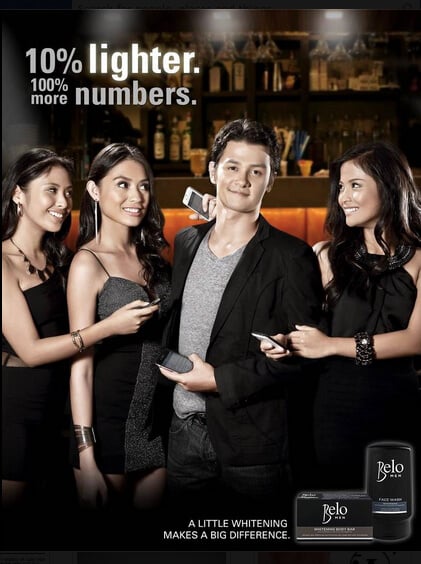
These concepts have a long cultural history, and often have been socially ingrained since childhood. A lot of this ties in with female worth being tied to appearance, which is the case in Western society, but frequently even more so in other cultures.
Slight differences in skin tone can have a serious impact on your life: skin tone can affect romantic and job prospects, African-Americans with darker skin have lower wages and longer prison sentences. People sometimes go to incredible lengths to bleach skin, using caustic agents and unregulated injections that can have nasty side effects.
Colourism isn’t just “wanting to be white”
But colourism isn’t simply a matter of racism and people undergoing extreme body modifications to turn themselves white. While this is easy to assume given the use of white celebrities in advertising and the harms of colonialism, there is a range of skin tones within each ethnic group, and in most countries colourism arises from a complex interaction of classism, colonialism and globalisation.
In many countries, colourism existed long before contact with Europeans. This is particularly the case in East Asian countries, where many whitening products come from – the preference for light skin comes from implications about social status. If your skin is lighter, you’re rich enough to avoid working in the fields under the sun.
A lot of the time this has been reinforced by colonialism, and the spread of Western aesthetics due to globalisation, but it’s occurred to different extents in different countries.
Assuming that all colourism comes from white supremacy erases the complexities of these cultural norms, turning all non-Western cultures into one giant monolith. It also centres whiteness and assumes that Western value systems are universal. White supremacy certainly didn’t help, but non-Western cultures were perfectly capable of discrimination before white people came along. This oversimplification also doesn’t help when it comes to finding solutions to colourism.
In recent times, activism against colourism has been taking off, although changing cultural norms is always a slow battle.
Skin of colour is prone to pigment disorders
But why use whitening products, if not because of colourism?
The short answer is: uneven pigmentation. Pigmentation problems affect skin of colour much more than white skin. But like in many other areas of research, there are less studies performed on ethnic populations.
There’s also less general awareness of these disorders. For many white people, including well-read skincare enthusiasts, “uneven pigmentation” just brings to mind freckles and tan lines. But there’s a wide spectrum of pigmentation disorders, and even medical reference sites give only the briefest information on them.
One survey of dermatology patients found that pigmentary disorders other than vitiligo were the 3rd most common problem in black patients (9% of patients), whereas in white patients it was the 7th most common problem (2% of patients).
Post-inflammatory hyperpigmentation (PIH) – brown marks that can linger for 4+ months after acne goes away – is incredibly common in skin of colour (65% of black, 53% of Hispanic and 47% of Asian acne patients had hyperpigmented spots in one survey), and is often the main reason for visiting the dermatologist.
Melasma, a condition where large patches of brown pigment develop on the face, was recorded to have a prevalence of 5% in France, 16% in Iran and 46% in Pakistan in pregnant women.
These are just two of the many pigmentary disorders that exist, and they lead to a lot of psychological distress.
In general, the darker the skin, the more prone to pigmentation it is, but even as a relatively light-skinned East Asian there’s a wide gap between my potential for pigmentation vs a white person’s. For example, sun-related hyperpigmentation runs in my dad’s side of the family – this is my 60-something dad, who isn’t outdoorsy but has a half-hour daily commute by car (and doesn’t wear sunscreen, tsk):

Treating pigment needs “whitening” ingredients
You can’t just lighten excess pigment
There are a number of ways that ingredients can work to reduce pigment, which I went through in my post on alternatives to hydroquinone. The main ways are:
- slow down the production of pigment by melanin-producing enzymes (particularly tyrosinase)
- reduce the amount of melanin-producing enzymes (particularly tyrosinase)
- undo melanin production by these enzymes
- slow down maturation of melanosomes (pigment producing organelles)
- prevent melanin pigment from travelling from where they’re made to where they’re seen
- increasing skin turnover, so the pigment is shed faster and gets diluted
However, the melanin pigment that appears in these hyperpigmentation disorders is the same pigment that makes skin coloured. That means that skincare ingredients can’t entirely distinguish between excess pigment and natural pigment.
Using any ingredient that reduces the appearance of excess pigment will also lighten skin, at least to some extent – Fair & Lovely, one of the brands with the more notorious colourism-based marketing, uses the benign and ubiquitous niacinamide (vitamin B3) as its main active ingredient. Avoiding niacinamide is near impossible these days, since it has so many benefits outside of its pigment-fading action.
Unavoidable skin lightening is particularly the case in dark skin as it’s more prone to producing more pigmentation and darkening, even with minimal UV exposure, and even with just visible light exposure. Most people with darker skin will be drastically different colours in summer and winter, and simply wearing sunscreen often means you need to change to a lighter foundation shade.
Fearmongering about “toxic chemicals”
The outrage about whitening products often gets muddied with chemophobia about “toxins”. While some of the products for bleaching skin do indeed use very “nasty” ingredients (mercury, caustic agents), most ingredients are quite benign, especially if used correctly and at a reasonable dose.
Hydroquinone gets a large share of the hate:
“a skin-lightening agent with side effects comparable to mercury poisoning” – Vice
“a chemical as toxic as paint stripper that can cause cancer” – The Day
But hydroquinone is the gold standard of topical hyperpigmentation treatments, and is frequently recommended by dermatologists, because it can be safely used.
Like for so many other ingredients in beauty products, the fearmongering surrounding hydroquinone is overblown. The cancer link is based on rat studies, but rats and humans process hydroquinone very differently. Hydroquinone is also naturally found in lots of food including pears (at 4-15 ppm). It can be irritating, increase sun sensitivity and cause ochronosis (hyperpigmentation), but many prescription skin products have a similar side effect profile.
Related post: Fact-check: The Dangers of Hydroquinone
There’s fearmongering about other whitening products and procedures too, even though they’re frequently used by white people to treat wrinkles, without anywhere near the same level of pearl-clutching:
“Other lightening methods include a chemical peel, which removes the top layer of your skin. This leaves fresher skin exposed to harmful solar radiation and environmental pollutants. Laser treatments offer an even more aggressive approach by breaking up a skin’s pigmentation, sometimes with skin-damaging results.” – qz.com
There are some differences in the approach taken between lightening skin overall, and aiming for even skin colour. Overall lightening usually uses illegal products, which can contain levels of hydroquinone and corticosteroids well beyond what a dermatologist would prescribe, and sometimes mixed in with dangerous ingredients like mercury and strong alkalis. The products are also used on a much larger surface area, and for prolonged, continuous periods of time, often without warnings about sun protection. Sometimes destruction of melanocytes (the cells that make melanin) is the aim for overall bleaching, whereas it’s seen as an unwanted side effect when treating pigment disorders.
But there’s no hard line between “products that even out pigmentation” and “products that lighten skin overall”, as ideal as that would be.
Why not boycott whitening products?
Clearly, avoiding all “whitening” ingredients is not possible if you want to reduce uneven pigmentation. Avoiding all products that use “whitening” claims and language that evokes colourism isn’t practical either.
Given that there’s so little awareness of pigmentation problems, and that pigmentation problems mostly affect darker skin, it’s unsurprising that there just aren’t many products in Western markets that effectively treat pigmentation.
That’s one of the reasons why so many people with darker skin turn to Korean and Japanese beauty products – products that target pigmentation are commonplace, with ingredients like AHAs, niacinamide, arbutin, kojic acid, licorice extract and vitamin C, and budget-friendly options are easy to find.
But in English-speaking countries, we can appreciate that “brightening” doesn’t imply “lighten your skin by a whole shade” while “whitening” might. These nuances aren’t generally understood in countries where native English speakers are scarce. Sometimes the literal translation of the words used to describe lightening pigmentation include the word “white”, even if the product was never intended to whiten skin tone overall.
This lost-in-translation impreciseness can lead to awkward gaffes, like with Cosrx’s galactomyces-based pigment product, which has undergone several name changes from “White Power Essence” to “Whitening Power Essence”, and finally to the much less loaded “Tone Balancing Essence”. This came after customers from Western countries emailed them to explain the issue and suggest the name change.
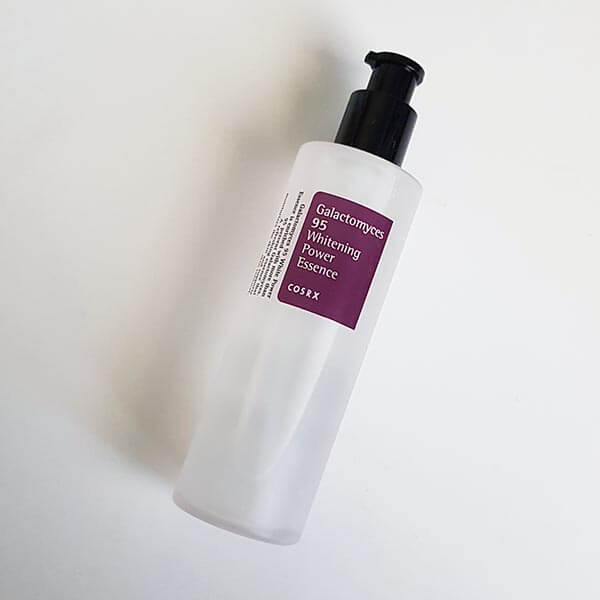
Since the products for tackling uneven pigmentation and lightening overall skin tone are essentially the same (barring illegal products), I think that’s the way to move forward from perpetuating colourism through the use of these products – asking brands to change their messaging, through not only advertising, but also carefully selecting product names and the wording of claims. It’s also through getting more Western companies to acknowledge that they have customers with darker skin and different skincare needs, and catering to those customers. And of course, supporting activists who are advocating against colourism, and avoiding any perpetuation of colourism ourselves.
It’s not through denying people the products they need, shaming or pointedly questioning people for using whitening products, assuming that their explanations about hyperpigmentation are simple denial, or well-intentioned lecturing on the importance of self-love and the ills of white supremacy to someone who has grappled with colourism their entire life.


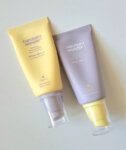

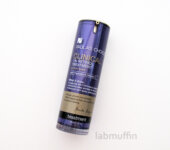
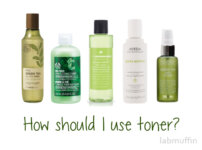
“Colourism – judging people by the colour of their skin – is pretty widespread in non-Western countries.” Well, it’s wide spread in Westerns countries too.
Also you didn’t mention the origins of idea of white skin as associated with royalties who didn’t have to work in the sun (same goes for Western and Eastern cultures) . Now in the West it’s the opposite – people with money “have a tan from lying on the beach” while poorer people have to work in the office and stay white.
To me the idea of using whitening products is the same as using tan – both are okay if not driven by hatred toward your own appearance but by preferences.
Yes, I did actually mention both colourism in America, and the classist origins of colourism in East Asia.
This was a really interesting and informative article. Thank you.
Saying that Western society’s perception of dark skin today is “opposite” of what it used to be is an inaccurate overstatement. The popularity of tanning in Western society is a trend credited to Coco Chanel in the 1920s. Fake tanners became widely available to the public in the 1960s. This is a fairly recent trend in beauty when considering fair skin was “superior” for centuries going back to the ancient Greeks and Romans. Obviously, white people desiring to tan their skin suddenly didn’t make colourism, racism, or discrimination go away for POC.
Loved the post Michelle! Very interesting and informative!
Ah ah ah the “White Power Essence”, I remember reading about it on Reddit! ???
thanks so much for this, Michelle. i’m going to reconsider how much time i spend on my own skin concerns; i’m white, prone to uneven pigmentation, and i have spent a lot of time (and money) trying to find products that treat it. my mother is darker than i am – she has a very olive skin tone – and i think i’ve unwittingly been colourist toward her uneven complexion whem recommending her skincare products.
this is very disjointed haha. thanks again for sharing.
lol “white supremacy” coming from someone who moved from Hong Kong to a “white supremacist country”. why don’t you go back if it’s so horrible? stupid c*nt
Bold of you to assume that Hong Kong, a former British colony, is somehow free from the impact of white supremacy…
Awfully silly, too, to assume that Australia is the same country it was 70 years ago. I live in a rural area (Shepparton, VIC) and there is a large Muslim community (very charitable), Somali and West African families (who are successfully raising crops of African corn in a neighbor’s paddock); Indian, Greek, Albanian, Turkish and Sikh cultural events and festivals; an important Yorta Yorta community with prominent leaders and beautiful sports, arts and schools programs. The Asian community has been here as long as the European one. Almost all of the capital cities are multi-cultural hubs and Australia is hardly a hot-bed of White Supremacist activism. Unlike my native land, the USA.
Ugh Michelle you’re awesome, I’m so sorry for this mean and offensive comment.
Don’t feed the troll. Please ban this user and delete that comment. You don’t deserve this and we shouldn’t have to read this loser’s comment either.
Michelle, thank you for a wonderful post.
Why would you reply to the person that is calling you stupid and using that word with *?
Don’t even bother yourself
Why is it that we find rude and ignorant people like you everywhere online? Read to learn, whether you agree or not with the opinions brought out, you can start a discussion. I have no respect for you the moment you resort to name-calling. I find Michelle’s post very informative and insightful.
Thanks Michelle! I think you did a great job of explaining. I am a brown Asian American (with lots of spots and patches that come and go with both the seasons and my diligence with my skincare routines) and have always wondered about the seemingly obsessive number of whitening products in Asian countries. I don’t know why I didn’t see that many of the reasons for this were similar to those in Europe and the US and that the history of skin color was based on class and privilege and not just western images of beauty. I learn so much from your website!
Thank you for this, Michelle. I am a light-skinned Southeast Asian in my early 20’s with a lot of hyperpigmentation. I’ve had a blotchy complexion practically since birth. I am self-conscious about how the hydroquinone- and acid-containing products in my medicine cabinet might be perceived by my already-colorist family members, since these bottles almost invariably contain labels like “whitening” rather than more precise terms like “discoloration.” For Japanese and Korean companies, “whitening” may be purposely ambiguous in order to market to a wider spectrum of prospective customers—both those that seek to balance skin tone, and those that seek to truly whiten, since colorism remains a prevalent issue in those markets. I’d love to see a shift in the advertising, but I’m less optimistic that it will happen, save for a few handful of companies like CosRx with larger American/European markets.
This is only tangentially related to the subject at hand, but it’s worth speaking about: As a diasporic Asian immigrant who grew up in the US, I recognize in myself a tendency to superimpose American narratives (racist /and/ anti-racist) on Asian countries, without fully understanding the complexity of racist and colorist ideologies in places where I’ve never been. The first step in dismantling systemic racism is to confront our own prejudices, and such a task requires precision. We cannot paint a topic as deeply historically rooted and often regionally specific as racism in such large brush strokes. Doing so is harmful; I believe that it has been the lukewarm “colorblind” and “multicultural” rhetoric of my country that has permitted violence against our black brothers and sisters to persist for so long after the civil rights movement. My imperfect approach, in speaking to others, has lately been to distinguish between the different forms of prejudice we’ve each internalized: white supremacy, anti-blackness, racism against other POC, racism against our own (e.g., looking down on our peers who are less assimilated into western society)—all related, and yet distinct, issues.
Another tangentially related point is that my education has granted me a lot of privilege as a female POC. I’m too often confined to my own bubble of leftist academia, so there is no doubt in my mind that I’ve got blind spots and need to listen more. We are only just beginning to learn to speak and listen at the same time.
(btw I’ve been a longtime reader and I love you even more now for starting this conversation ❤️)
This is one of the best comments on this post I’ve read so far. I haven’t much to add (I’m white) except thanks for sharing your perspective, its insightful and wonderfully well written <3
Great article, Michelle.
I grew up in an Indian/Pakistani family and hated the Colourism that most people in my family had. When a child was born, the first question was “Is it a boy or a girl?” and if a girl, the second question was “Is she fair?”.
I’ve seen the desperate, lifelong attempts of South Asian women to go whiter or at least stay as light as possible or give the appearance (through make-up) of being paler that they are.
I’ve got lots of brown marks on my face as well as moles, and so use sunscreen religiously 365 days a year. I have never used and never will use “whitening” products, but I still feel an underlying guilt for using SPF50 sunscreen – it makes me feel as if I am subconsciously ashamed of my race.
This was so perfectly laid out and well said! A lot of media likes to demonize legitimate products and ingredients that help a lot of people, especially when they talk about the counterfeit ones with unsafe levels of hydroquinone and mercury.
But this is a perfect explanation why it’s good that the market is growing because there are now more reliable brands and people are becoming educated about how to properly use these products without the side effects. Hopefully the industry can learn that colorism is an unethical way to advertise their products and it can focus more on the nuances of lightening rather than whitening.
Great article thank you!!❤️
Hi Michelle! I always learn so much from your posts! Make me think. I have both freckles and hyperpigmentation from sun exposure. I use niacinamide and alpha arbutin for it. As well as other products like a retinol and peptides for my 47 years old skin. Thanks again!
Michelle,
Thank you for all your hard work.
Latisha-Go to hell, or crawl back under from whence you came…
Thank you for this wonderful post. I think it’s a very important issue to tackle. We see a LOT of colorism here in Latin America, and a lot of whitening products that have mercury- hence why you see some women walking around with no eyebrows. It’s very directly tied to racism and classism here too, though, and part of a bigger fight.
Posts like these, that are well-thought out and reasoned, are why I love to follow you.
I also found this very interesting! Michelle, you are always informative, but this one made me think! Thank you and well done!
Michelle, thank you for writing this lovely and well-thought-out piece. It’s clear from how well this is laid out that you’ve given a lot of thought to this topic, and your treatment is thorough, clear-headed, and very compassionate. Thank you for handling this sensitive topic so elegantly (as a Chinese girl who enjoyed tanning to the dismay of my parents, I know the sensitivities well!). It really helps me clarify some of the unformulated frustrations I’ve had whenever I’ve encountered this issue before.
Poignant passage that really struck me: “Assuming that all colourism comes from white supremacy erases the complexities of these cultural norms, turning all non-Western cultures into one giant monolith. It also centres whiteness and assumes that Western value systems are universal. White supremacy certainly didn’t help, but non-Western cultures were perfectly capable of discrimination before white people came along.”
It’s so true that it’s a kind of Orientalism and Western solipsism at once to think colourism cannot be an issue in non-Western cultures even if Western influences, in particular White supremacy, did not exist. This has been a hard thought for me to articulate but it’s precisely why it’s so frustrating to me everytime somebody says “don’t make everything about race!” when the topic of skin lightening come up in Western contexts. Unfortunately and fortunately, non-Western people are perfectly capable of coming up with and enforcing cruel and prejudiced standards of beauty that are problematic without the influence of Whiteness, though these capacities have long been enhanced by the addition of White supremacy through both literal and more subtle forms of colonialism.
Bravo, and thank you again for being brave and so clear-headed on such a sensitive topic!
Excellent and informative summary… thanks for this.
Is it ok to repost and tag a few UK beauty editors who might be interested?
Brilliant post, thanks for looking into this. I’m always puzzled by this
“ That means that skincare ingredients can’t entirely distinguish between excess pigment and natural pigment.”
I love my skin tone and worry about getting lighter while using arbutin/niacinamide for my PIH. Is there anything I can do as consumer to make brands reasearch way to target excee pigment only?
Thank you that was thoughtful and interesting. I remember a white TV personality over here in the UK said she got a lot of abuse when she developed melasma on her top lip after pregnancy, people kept telling her to wax or shave her “moustache” and saying she was “dirty” etc for not doing so. Its amazing just how judgmental people can be about pigmentation although this is wrapped up in ideas about facial hair in women too.
This is such an important topic and I appreciate your post on it. The more openly we can discuss these issues, perhaps the less power and stigma they will have and ideally eradicate the effects of colourism. Coming from a West Indian background and a darker-skinned mother who talked about leaving her island because she felt that colourism had limited her career prospects and then migrating to the U.S. where she felt the blast of racism and sexism, I am very aware of the damaging effects on colourism on people of color in society.
My skin is considered on the lighter side in West Indian culture but in the summer, my skin is prone to getting very dark with a lot of time in the sun and I’ve actually had darker people who I don’t even know scold me for spending too much time in the sun without an umbrella and I suspected that it was not out of concern for sun damage but out of concern that I’d get darker, with all the implications of dark skin. I sort of laughed it off at the time but thinking on it now, of course, it makes me sad for what the people must have gone through in their lives to arrive at that conclusion that having being a few shades darker would diminish my prospects in life. Actually, sadly, there is truth to those fears as there was a study done some years ago that concluded that for each shade of lighter skin, was like having an extra year of education. I think part of the solution to colourism needs to come from systemic changes in our societies where light skin is not only seen prized but is also actually rewarded with better career opportunities.
Personally, my skin also have issues with PIH and admit, that hydroquinone and some of these “fade” products hold a certain stigma for me. I had a dermatologist that used to prescribe a hydroquinone cream which was effective but my problem (along with the high cost of office visits and products in the U.S.) is the idea of having to always have to rely on this product and using it long term. So I do opt for alternative methods with some success but I admit, none worked as fast as that hydroquinone cream. I used to live in a NYC neighborhood that had a store owned by Africans that had all sorts of “bleaching creams” on the shelves. I assumed almost all were unregulated and many likely had toxic ingredients. I only bought hair care products as I was afraid of those dubious skin creams. I have also seen K-beauty products that I wanted to try as the ingredient list looks kinder to my skin (which is also sensitive) but I just could not get past the stigma of some of those names.
Perhaps more honest dialogue like this will bring some attention to this issue and skin care companies might pay more attention and formulate their products and marketing with the aim of ameliorating this issue.
Thank you so much for this article. I’ve had age spots for years. I appreciate your noting ingredient shaming and vilifying. It is so unhelpful. Other than my problems, i was very moved as you described the colorism that effects so many people worldwide. Please continue your work and writing. It is so appreciated.
Thank you so much for sharing, Michelle. My initial instinct was to share this on Facebook, except I fear I might trigger people that might feel oppressed by the ad you linked. However, I think bringing these uncomfortable topics into discussion will hopefully create more understanding about how harmful colorism is. I see wanting to address small patches of pigmentation as vastly different to overall skin bleaching. There are unfortunately some unscrupulous companies out there that continue to market seriously harmful products. There are also plenty that use ingredients that aren’t actively harmful (I’m mainly thinking of mercury). It’s a complicated issue, and one that merits further, not less, discussion.
Thank you for this (once again) well written and informative article. I struggle with PIH, so researching “brightening” ingredients has always played a huge role in my skin care. It wasn´t until I had a woman from Thailand working with me though that specifically asked why she wasn´t able to buy “whitening” products to lighten her whole face in Germany that I realized that there was more to the topic than I had realized so far.
I wouldn´t want to be without my Niacinamide, but I agree with you that we need to address the marketing and wording of some products.
Thank you for such an interesting and educational post, I learned a lot. I’m sorry some people In the comments were very rude to you, it definitely wasn’t deserved.
I am very glad I came upon this article. Lately, I’ve been seeing a lot of my most trusted, favorite Korean and Japanese skincare brands being accused of “encouraging whiteness” and looking down on 1 particular ethnicity/race. I feel very sad that they are being misunderstood due to cultural differences.
Thank you very much for writing this. I struggled with acne scars and an uneven skintone throughout my teenage years and in my early adulthood — it was hard to find any products in the US that helped so I turned to the Asian market. It changed my life forever!
Can you please opine in which category clinique’s even better dark spot corrector falls? I have super pale european skin with some photo damage and occasional breakout scarring and this is so far the only thing that pales my scars and pigmentation without making me ghostly white in process. I thought it perhaps be skin tone evening.
Btw my son is mixed as my husband is Caribbean and i used the same corrector on some of his mosquito scars and it evened the skin wonderfully without whitening or bleaching it
If it’s a reputable brand and not regulated as a drug, it’ll be formulated to be gentle enough that it mostly just evens out skin tone.
Very useful post. I really appreciate your post. Thanks